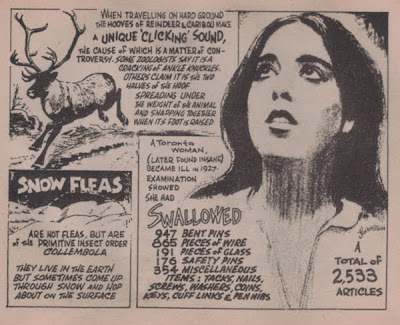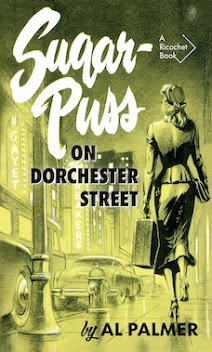
In 1943 and 1944, Collins placed some pretty pricey White Circle adverts in the Globe and Mail. I expect these spurred sales, but they appear to have had no effect on editorial – during those same years, there was otherwise no mention of the imprint in the paper. This is known as integrity. Indeed, the "Canadian Classic" piece featured in Thursday's post marks one the very few times White Circle appeared in actual copy. If the somewhat unreliable Globe and Mail search engine is to be trusted, the imprint was last mentioned in its 1 April 1950 edition – and then only in connection with rising star Hugh Garner:

Not much of a notice, but interesting in that Cabbagetown, which White Circle would publish, is the only mass market paperback original found in the Canadian canon. (Should I be counting Neuromancer?) The piece also reflects a significant difference between White Circle and its Canadian competitors. Harlequin's most acclaimed Canadian writer was Thomas H. Raddall, News Stand Library had... well, Al Palmer, but White Circle published Garner, Stephen Leacock, Hugh MacLennan, Earle Birney, Ralph Connor and Roderick Haig-Brown.
(In fairness to News Stand Library, it did publish Garner's pseudonymous 1950 "Novel about the Abortion Racket", Waste No Tears.)
Six decades later, Garner has dimmed, Connor is little read, and Haig-Brown seems relegated to regional writer status – but Leacock, MacLennan and Birney continue to be celebrated and studied.
In keeping with this month of Thanksgiving, what follows is a final visual feast featuring some of White Circle's more interesting Canadian titles. The pitch on the early Barometer Rising is a favourite. "AS EXCITING A NOVEL AS MAY SAFELY BE PUBLISHED", it begins, immediately contradicting itself with this warning: "A NOVEL OF LITERALLY UNENDURABLE SUSPENSE".
There you have it: not safe at all, but literature's equivalent of Ernest Scribbler's killing joke.

1943 and 1951

1945
1952
My thanks to JC Byers, whose thorough Bibliography of Collins White Circle provided images of titles missing in my own collection.














































.jpg)
.jpg)
.jpg)





